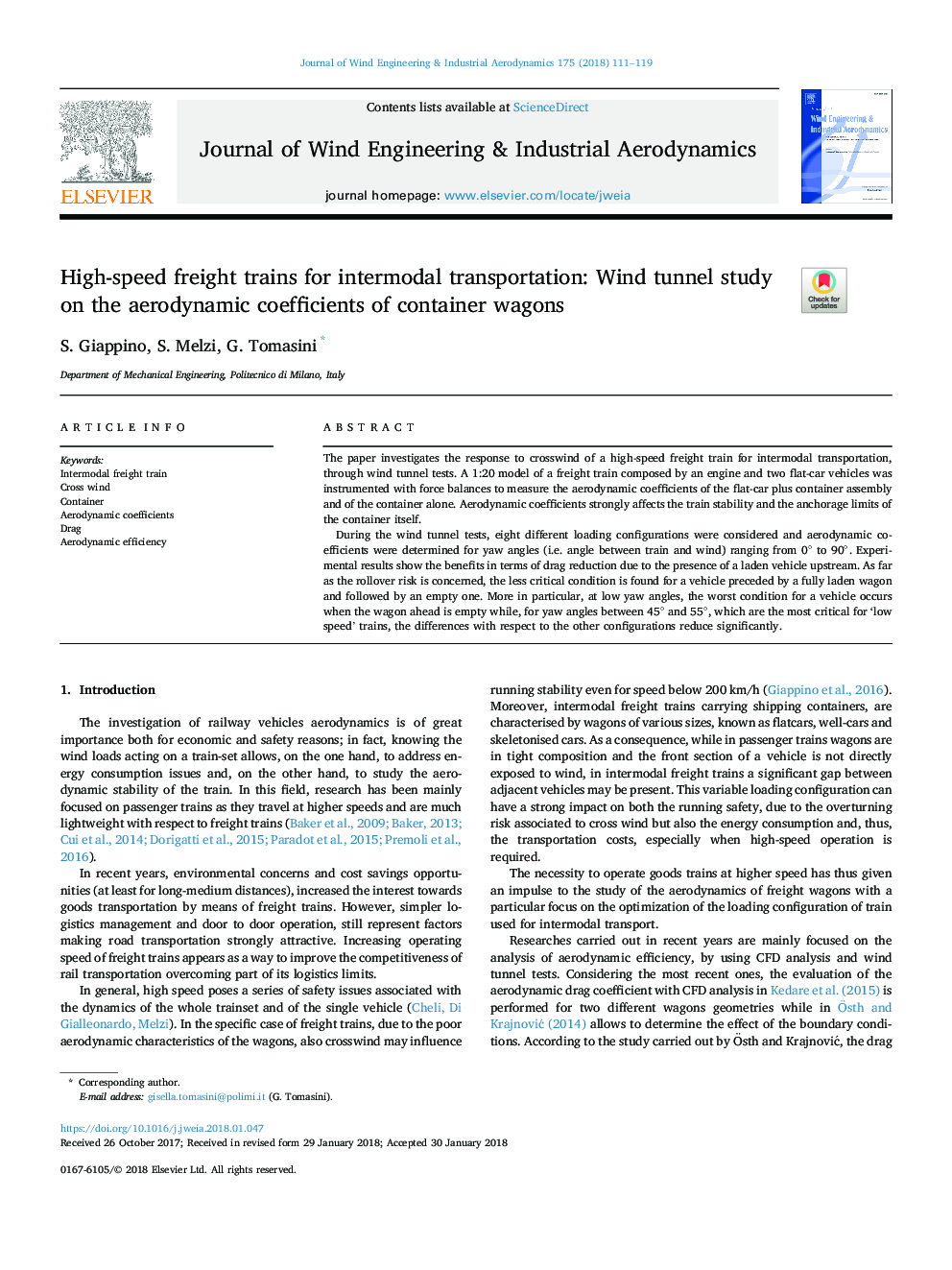| Article ID | Journal | Published Year | Pages | File Type |
|---|---|---|---|---|
| 6756957 | Journal of Wind Engineering and Industrial Aerodynamics | 2018 | 9 Pages |
Abstract
During the wind tunnel tests, eight different loading configurations were considered and aerodynamic coefficients were determined for yaw angles (i.e. angle between train and wind) ranging from 0° to 90°. Experimental results show the benefits in terms of drag reduction due to the presence of a laden vehicle upstream. As far as the rollover risk is concerned, the less critical condition is found for a vehicle preceded by a fully laden wagon and followed by an empty one. More in particular, at low yaw angles, the worst condition for a vehicle occurs when the wagon ahead is empty while, for yaw angles between 45° and 55°, which are the most critical for 'low speed' trains, the differences with respect to the other configurations reduce significantly.
Related Topics
Physical Sciences and Engineering
Energy
Renewable Energy, Sustainability and the Environment
Authors
S. Giappino, S. Melzi, G. Tomasini,
